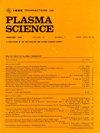远程操作控制系统和真空兼容的容器内检测系统的操作
IF 1.5
4区 物理与天体物理
Q3 PHYSICS, FLUIDS & PLASMAS
引用次数: 0
摘要
托卡马克中的等离子体面组件(pfc)需要定期检查,以便检测由于暴露于高热流密度和等离子体辐射而造成的任何损坏或磨损,以便在损坏变得严重之前进行维修或更换。检查必须在不打破超高真空(UHV)的情况下进行,以保持机器的可用性。研制了一种兼容真空和高温的托卡马克在役检测系统(IVIS)。IVIS兼容于8e - 8mbar真空和$100~^{\circ}$ C温度。该系统由一个5自由度铰接臂组成,伸达4米,部署在真空容器内,携带视觉设备作为有效载荷。它安装在线性导轨上,存储真空室(SVC)通过真空闸阀与托卡马克的径向端口相连。IVIS手臂由05个旋转关节组成,基于真空兼容无刷直流电机,带有特殊润滑的齿轮箱和特高压兼容多转绝对编码器。IVIS系统使用基于闭环虚拟现实(VR)的监控系统进行远程控制。IVIS控制系统基于CAN-Open网络架构,包括具有霍尔传感器和绝对编码器位置反馈的高精度伺服驱动器。在初始测试中,位置重复性达到±2mm。该系统还可以适用于任何具有挑战性环境(如真空、温度和狭窄空间)的大型系统的检查和维护。本文详细介绍了IVIS控制系统的设计和测试结果。本文章由计算机程序翻译,如有差异,请以英文原文为准。
Remote Handling Control System and Operations of Vacuum-Compatible In-Vessel Inspection System
The plasma-facing components (PFCs) in a tokamak require periodic in-service inspection to allow for the detection of any damage or wear due to the exposure to the high heat flux and plasma radiations so that repairs or replacement can be made before the damage becomes severe. The inspections must be done without breaking the ultrahigh vacuum (UHV) to maintain the machine availability. An in-vessel inspection system (IVIS) compatible to vacuum and high temperature has been developed for the in-service inspection of tokamaks. The IVIS is compatible to 8e−8 mbar vacuum and
$100~^{\circ }$
C temperature. The system consists of a 5-DOF articulated arm with a reach of up to 4 m to deploy inside the vacuum vessel carrying a vision device as a payload. It is mounted on a linear guide with a storage vacuum chamber (SVC) connected to the radial port of tokamak through a vacuum gate valve. The IVIS arm consists of 05 revolute joints based on vacuum-compatible brushless dc motors with specially lubricated gearboxes and UHV-compatible multiturn absolute encoders. The IVIS system is controlled remotely using a closed-loop virtual reality (VR)-based monitoring and control system. The IVIS control system is built on CAN-Open network architecture and includes high-precision servo drives with position feedback from Hall sensors and absolute encoders. During initial testing, the position repeatability of ±2 mm has been achieved. The system can also be adapted for inspection and maintenance in any large system with challenging environment such as vacuum, temperature, and narrow spaces. This article presents in detail the IVIS control system design and test results.
求助全文
通过发布文献求助,成功后即可免费获取论文全文。
去求助
来源期刊

IEEE Transactions on Plasma Science
物理-物理:流体与等离子体
CiteScore
3.00
自引率
20.00%
发文量
538
审稿时长
3.8 months
期刊介绍:
The scope covers all aspects of the theory and application of plasma science. It includes the following areas: magnetohydrodynamics; thermionics and plasma diodes; basic plasma phenomena; gaseous electronics; microwave/plasma interaction; electron, ion, and plasma sources; space plasmas; intense electron and ion beams; laser-plasma interactions; plasma diagnostics; plasma chemistry and processing; solid-state plasmas; plasma heating; plasma for controlled fusion research; high energy density plasmas; industrial/commercial applications of plasma physics; plasma waves and instabilities; and high power microwave and submillimeter wave generation.
 求助内容:
求助内容: 应助结果提醒方式:
应助结果提醒方式:


